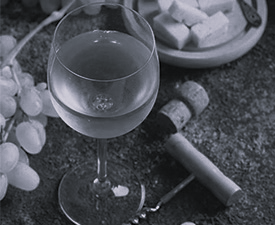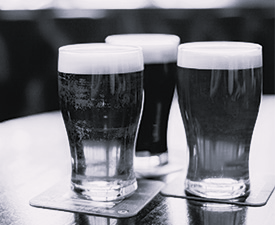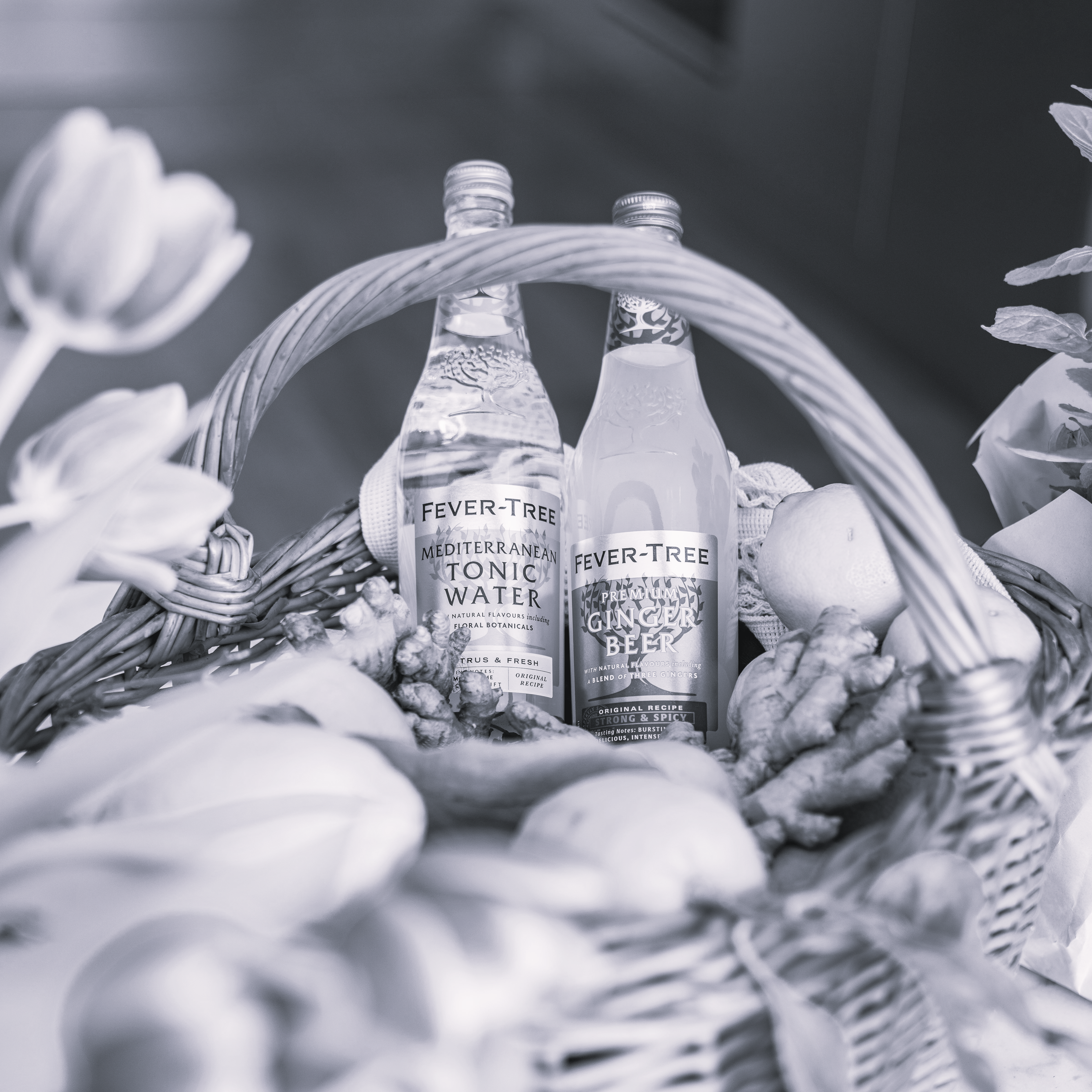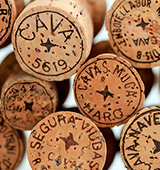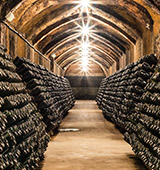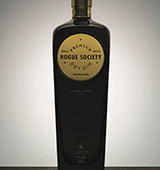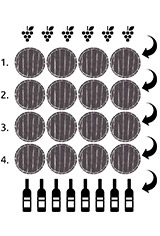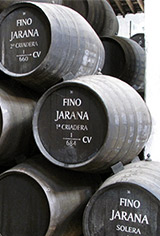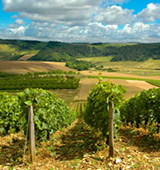Did you know these 5 facts about sake?!
1. There are only 4 ingredients in sake!
Come on you know them: rice, water, mould and yeast! Of course, some sakes have a little distilled brewer's alcohol, but on the whole, these few ingredients are responsible for so many complex flavours. Amazing!
2. Sake is fermented not distilled!
That's why it is called a sake brewery, because sake is fermented like wine and beer. It is not a hard liquor.
3. Sake is called Nihonshu, which means the wine of Japan!
We call sake sake and not saki! But in Japan, sake means all
…
VODKA IN THE RUSSIAN REVOLUTION.
After the Russian Revolution, the Bolsheviks confiscated all private distilleries in Moscow. As a result, a number of Russian vodka-makers emigrated, taking their skills and recipes with them. One such exile revived his brand in Paris and later met a Russian immigrant from the USA, they then together set up the first vodka distillery 1934. This was subsequently sold to a U.S. drinks company. From this small start, vodka began in the 1940s to achieve its wide popularity in the Western World.
VODKA PRODUCTION
Vodka wasn't originally made from potatoes
…
During the 17th Century, Sugar Farmers throughout the Caribbean experienced the same issue; how to deal with the by-product of sugar production, Molasses. Lucky for us, some clever fellow eventually found a solution, boiling and fermenting of Molasses to producing an ideal starter for the distillation of a spirit, leading to the creation of Rum.
There are several varieties of rum produced worldwide, including; unaged white rum, barrel-aged gold or amber rum and dark rum usually aged then coloured with molasses. Beyond these varieties is Spiced Rum. Initially a solution for irregular …
Cava is a Spanish sparkling wine, produced in the same way as Champagne but with different grape varieties.
There are three main varieties used in the production of Cava - Macabeu (white), Parellada (white) and Xarel-lo (white) however Chardonnay, Pinot Noir, Garnacha and Monastrell are also permitted.
The bubbles are the result of a second fermentation, which takes place within the bottle, which provides the yeasty somewhat biscuit notes that linger behind the light floral aromas, racy acidity with a fine mousse.
The vast majority of Cava is produced in a Brut style, being …
Tequila is often viewed as a rough shot, accompanied by a lick of salt and a suck on a lemon wedge, however it is largely misunderstood and offers a wide array of styles and quality.
At its simplest level, Tequila can be divided into two key categories; Mixtos Tequila and 100% Agave Tequila. Below is an overview of these two categories and the various styles within.
Mixtos Tequila
Usually of the lower price bracket, and the cause of most of Tequila's image issues, Mixtos are 51% or greater agave with the remaining portion made up of alternative sugar sources, most commonly Sugar
…
During the 18th Century legislation was passed in Britain that meant every Royal Navy vessel was required to take on board a certain quantity of Gin. It was believe that Gin would help keep sailors healthy by assisting them in the fight against diseases such as malaria or scurvy.
Because most vessel stored their rations of gin below deck it was often held alongside the ships essential gunpowder stores, the Gin was always at least 57% ABV, as this would ensure the gunpowder would still ignite if the two were to come into contact.
Hence the name Navy Strength Gin was born.
…
Produced in the Beaujolais region of France, using Gamay Noir grapes, Beaujolais is a wine celebrating the end of harvest. Released on the third Thursday of November each year, on what is known as Beaujolais Nouveau Day, the wine must be produced from Gamay Noir grapes grown within the A.O.C. region of Beaujolai and harvested only by hand. The winemaking methods for this wine lead to a fresh, fruit driven wine low in tannins and intended for immediate drinking. Best served chilled.
Small allocations of this wine are made available in New Zealand, with the wine being air-freighted from …
Solera is a Spanish method of producing wine, especially used in Sherry and Madeira, whereby small amounts of younger wines stored in an upper tier of casks are systematically blended with the more mature wine in the casks below. This leads to fractional blending, resulting in a finished product with a mixture of ages, with the average age of the product increasing as the process continues.
…
1. Burgundy is the original home for both Pinot Noir and Chardonnay grapes. The regions (terroir) is believed to be the best for expressing their character - elegant, aromatic, complex and highly enjoyable.
2. Burgundy is located in the east-central region of France, with 5 distinct growing regions: Chablis, Cote de Nuits, Cote de Beaune, Cote Chalonnaise and Marconnais.
3. The Cote de Nuits and Cote de Beaune regions combined are known as the Cote dOr, which translates to Golden Slope.
4. Burgundy is highly classified, with other 100 appelations divided across 4 levels of …
1. It is believed a bottle of Rhone Valley wine is enjoyed somewhere in the world every 13 seconds.
2. 400 million bottles of Rhone Valley wines were sold between 2012-2013.
3. The Rhone Valley region is split into two segments, North and South Rhone. The climates in these two regions vary greatly, with the North experiencing severe winters with warm summers being overall colder than Southern Rhone. The South experiences mild winters and downright hot summers.
4. Broken further into small appellations, the most famous are: Cote Rotie, Hermitage, Condrieu and Chateauneuf du Pape. 5. …
We’ve all heard some exclaim - Pass me the Champagne or possibly - Any Shampoo left? But is that bottle of bubbles (not the bath variety) really Champagne?
To be called a Champagne the wine must be produced using grapes from the Champagne region of France, using the process of Methode Traditionelle to create carbonation amongst other requirements.
Method Traditionelle: This is the process of producing carbonation in a sparkling wine by performing a secondary fermentation in a sealed bottle, trapping the CO2.
Although other grape varieties are approved for production of …
1. The first Kentucky Derby was held on the 17th of May, 1875 giving the race over 140 years of proud history!
2. During those 140 years, not one race has been postponed due to rain or bad weather.
3. Approximately 120,000 mint juleps are served annually during the two-day period of the Kentucky Oaks and Kentucky Derby.
4. The maximum age for a horse to compete in the Kentucky Derby is Three Years Old. 5. 142,000 hot dogs are consumed during the event!
6. The race is also known as ‘The Run for the Roses’ due to the 554 red roses draped over the winner.
7. The Kentucky
…
when the glass tells us about the wine
With Sensis Plus Glasses you can immerse yourself even more deeply in the world of taste surrounding wine - and hence in its history. Authentic and unadulterated. Sensis Plus reveals the full complexity of wine and shows its true potential. From fruity to mineral to spicy and full-bodied. No nuance remains unnoticed. The original character of the wine and its structure are both retained to the full.
After six years of research, testing and tasting the team at Eisch developed their Sensis Plus wine glass, which undergoes an oxygenative process …
Rioja is split into several styles or expressions, under the Consejo Regulador DOCa Rioja, each with minimum age requirements:
1. Rioja: Low / No Oak 1-2 Years aging. This is a baby Tempranillo, without all the tannin or richness of the other classifications. It shows the varietal characteristics if not much else.
2. Crianza: 1 Year in Oak + 1 Year in Bottle. This is an accessible level of Rioja wine, aged commonly in used oak the flavours are not as strong. Its not too rich, but could be said to have more body than Merlot with better value than Cabernet Sauvignon.
3. …
1. In 2010, a beer believed to be the worlds oldest drinkable beer was found on a shipwreck, believed to have gone down in the Baltic Sea over 200 years ago!
2. In ancient Egypt, workers were often given a rations of beer, three times a day as payment. They great Pyramids were built by workers paid in this way.
3. Over 100 medicinal uses for beer have been found in ancient Egyptian texts.
4. It is believed that the first professional brewers were woman.
5. The term Rule of Thumb is believed to be derived from an old brewers method of checking the temperature of their product
…
1. Whiskey was first produced in Ireland, by Irish Monks who had returned from pilgrimages with the new found skills of distillation learnt from the Arabic World.
2. The E in Whiskey was added as an attempt to differentiate the Irish product from what was considered inferior Blended Scotch Whisky.
3. American Whiskey, including Bourbon also uses an E, as the industry was mostly started by Irish Immigrants.
4. Following the Phylloxera Plague of the 1870s, whiskey surpassed Brandy as the worlds favourite spirit.
5. In June 1875, the Great Dublin Whiskey Fire started in a
…
Casks or Barrels have been used for the maturation of wine, spirits and food items for 100s of years, with the aim of improving flavour. Initially used as storage vessels and for ease of transportation, the process of maturation and its results were most likely discovered by accident.
As ambient temperature rises, the wood of the cask expands causing the wine or spirit to be absorbed into the woods pores. As the temperature drops, the wood contracts, causing the liquid to withdraw. It is these temperature changes, known as cycles, that causes the interaction between the cask and liquid …
The midnight sun is a natural phenomenon which occurs during the summer months. During which locations north of the Arctic Circle or south of the Antarctic Circle enjoy a visible sun during the local midnight.
The closer one is to the pole the more days per year that they experience the midnight sun. A quarter of Finlands territory lies north of the Arctic Circle, and at its most northern point the sun does not set for a full 60 days during summer.
The opposite occurs during the winter months, during which the sun does not rise above the horizon throughout the day.
…
Tonic Water, the well-known and respected side-kick of Gin. Its seen as the Yin to Gins Yang, but what is it?
Modern tonic water is a carbonated soft drink in which quinine is dissolved. Quinine, is an anti-malarial alkaloid sourced from the bark of the cinchona tree found in mountainous areas of South America. Since the 1640s it has been known to help fight malaria.
It was not until 1825 that British officers began to mix gin with their daily ration of quinine tonic in the hopes of making it more palatable. At which point one of the worlds most well-known cocktails was …
There are many common misconceptions about the peatiness of whisky, chief of which is the notion that the peat flavours come from the peat in the dark waters which we draw from the hills above the distillery and use to create our spirit.
This isn't true. If you taste peaty water you'll find it tastes slightly minerally, but certainly not smokey. The peatiness is in the barley itself.
To prepare barley for distillation it must first be malted. Anyone who has ever sprouted seeds at home will be familiar with the process. Steep the grain in water, allow it to germinate, generating the …



